In pictures: Yemen's Southern Movement
- Published
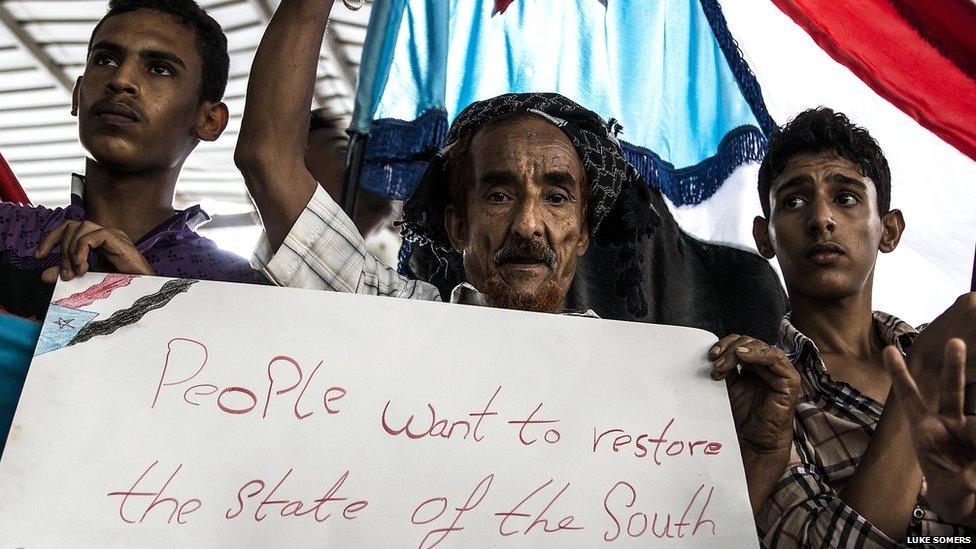
In southern Yemen, some 20 years after unification with the north, pressure is growing to once again break away and form a separate republic. The Southern Movement (SM) - a large and politically potent coalition of secessionist groups, known as Herak - is at the forefront of these calls. "Unity arrived in 1990. But it came without any benefit for us," a supporter at this protest in Aden says. "The northern people want unity, but what about the southern people who want democracy?" Photos by Luke Somers
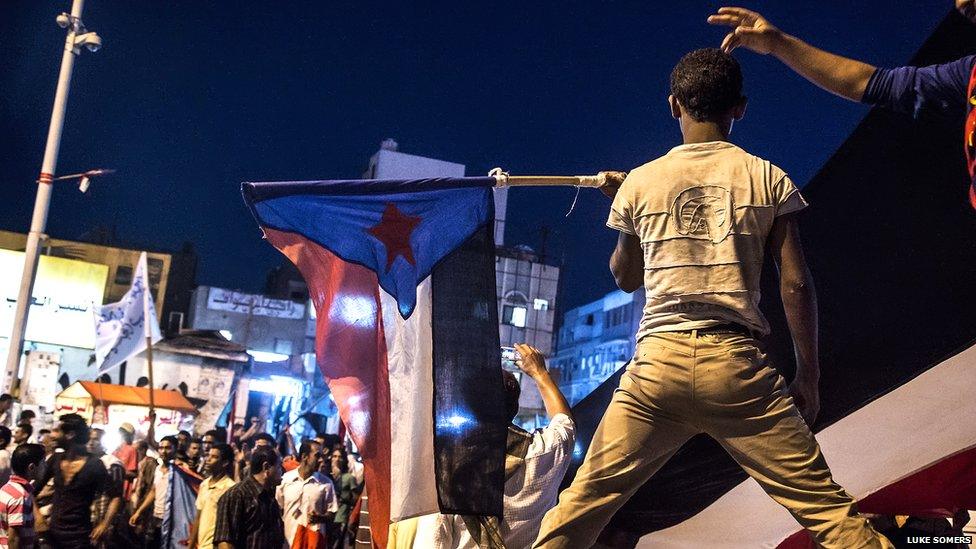
The flag used by the Southern Movement is identical to the flag which flew over the former People's Democratic Republic of Yemen. In 1990, the south Yemeni state joined the north to form the Republic of Yemen, which has managed to hold up until the present day. Throughout the historically prosperous port city of Aden, the omnipresence of the former state’s flag on walls and buildings gives the sense of a city in rebellion.
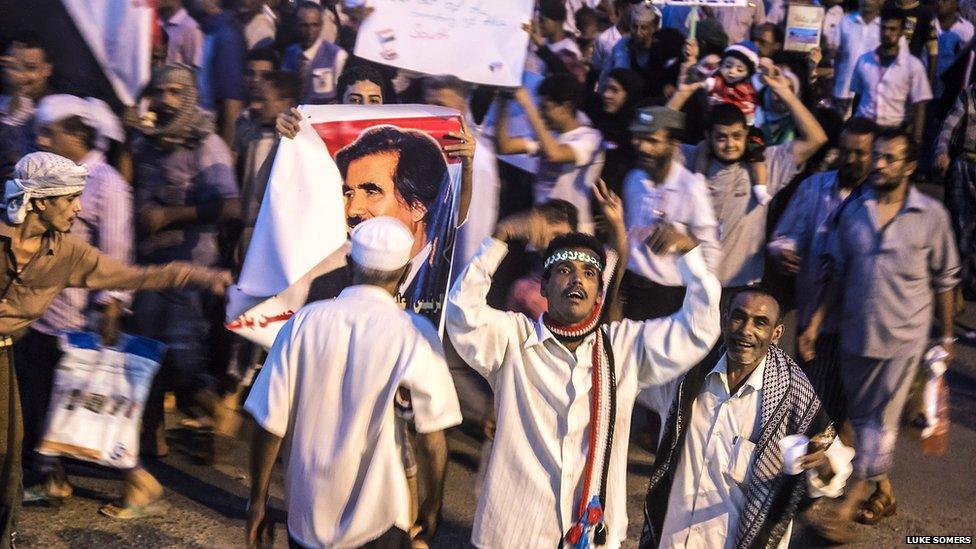
The call for secession is laden with emotion for many Adenis. Fuelled by grievances over what they see as countless instances of northern aggression and unfair treatment, and because they see themselves as having a separate culture and traditions, the movement's followers take to Aden’s streets weekly. Before a march, a woman named Amal says: “We have a history, we had a chair at the UN, we had a state charter… Now, we are nothing. We are missing our own identity.”
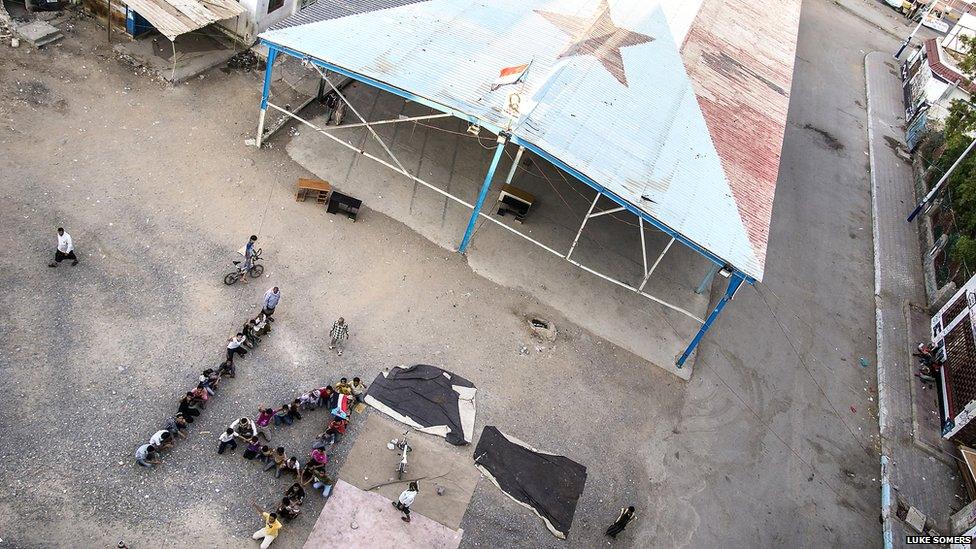
Here, youths at the movement's headquarters in Aden mark the 14 October holiday, which commemorates the withdrawal of the last British soldiers from Aden after 128 years of occupation. Civil war broke out in 1994 four years after ex-President Ali Abdullah Saleh oversaw the unification of north and south. After northern military forces prevailed and maintained unity, a great many southerners continue to feel embittered about what they say is a new cycle of occupation by northerners.
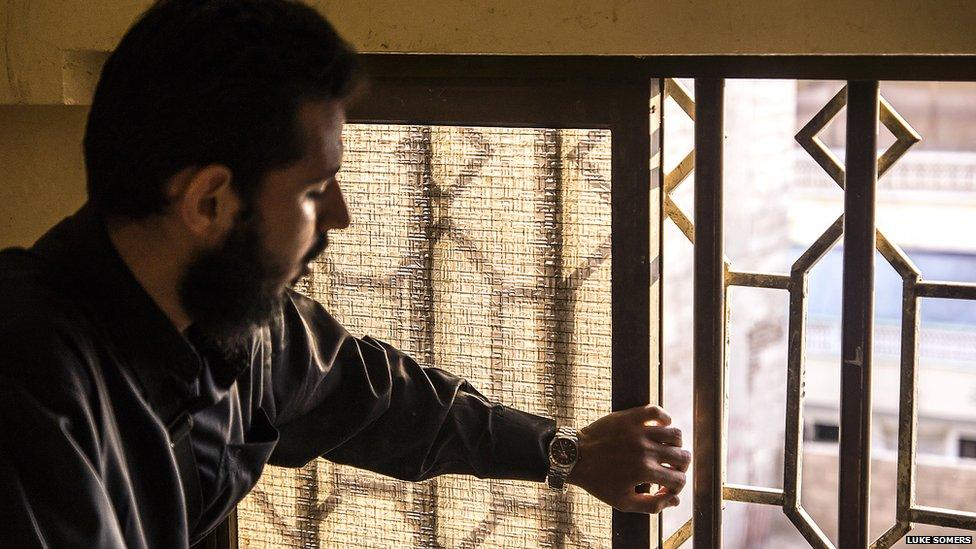
At the headquarters, a man pauses beside a window through which a fellow Heraki was shot dead by military forces in the past year. The central building there - in addition to neighbouring houses and businesses - remains pockmarked with bullet holes, evidence of tensions between government forces and the SM which have, at times, turned violent.
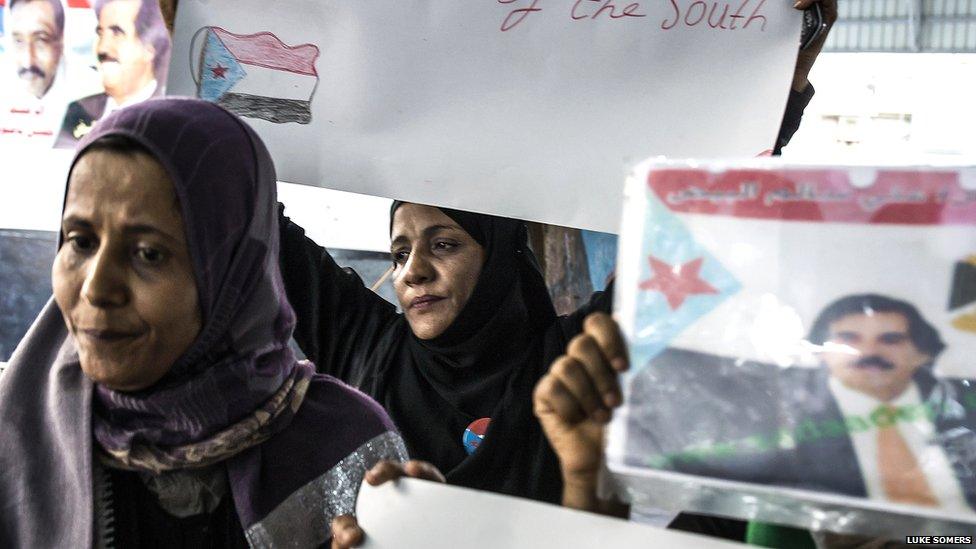
Nasser, 19, was shot dead by "occupying military forces... just because he was a youth with Herak”, says his mother (C). "The price for my son's blood is independence and freedom for Southern Arabia." While Amnesty International recently issued a statement condemning the "intimidation" of southern activists, SM leader Ali Haitham Ghareeb says, although he believes in peaceful protest, "the ability to control younger and more violent supporters is not our responsibility".
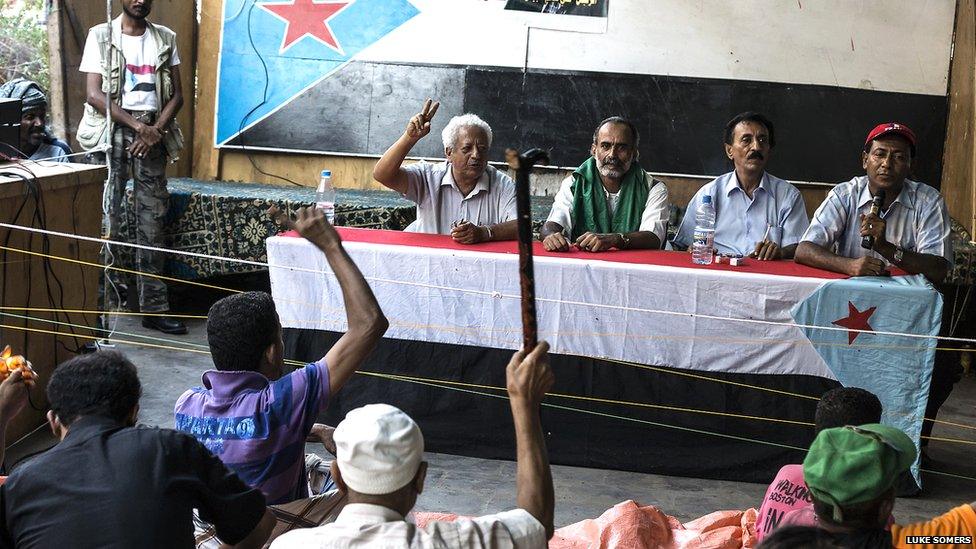
SM representatives address a crowd of supporters at an open-air meeting in Aden. President Abd Rabbu Mansour Hadi’s invitations to participate in the upcoming National Dialogue Conference - less than a month away, which intends to bring Yemen’s political factions and parties together - have been rebuffed by the SM leadership. One prominent SM leader demanded the "southern question" be the only item on the conference’s agenda as a precondition for participation.
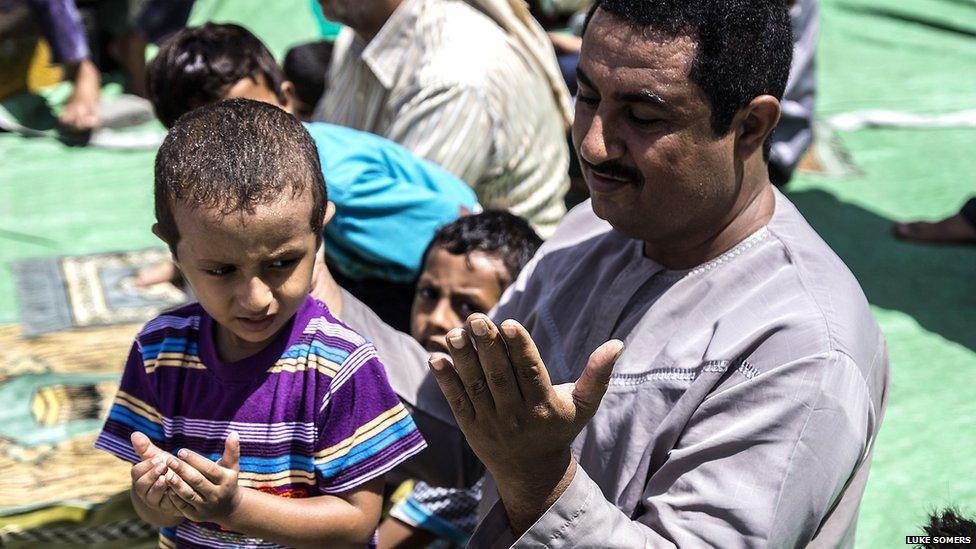
A father and son pray together during the Friday prayer in Mualla district, where Aden Port is located. Outdoor gatherings and marches have attracted not just youth activists, but women and families - reminiscent of other national protest movements in recent times, most notably the Yemeni Youth Revolution of 2011.
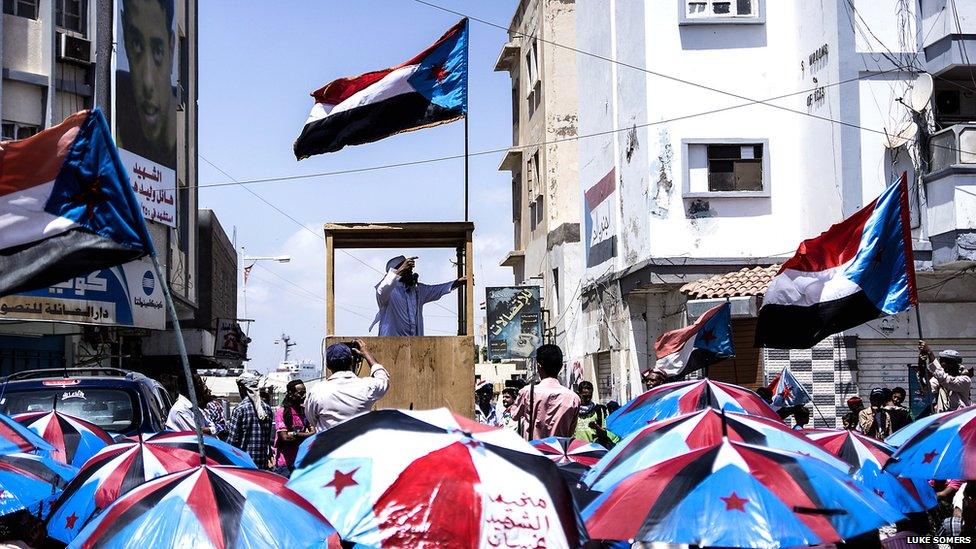
Surrounded by flags of the former Yemeni republic, an imam delivers a politically charged sermon in the midday heat before the start of an SM march. While there is some sympathy for current President Hadi, a southerner, after years of perceived land grabs, aggression and ill-treatment at the hands of northerners and government officials, a protester named Hamza sums up the feeling of many SM followers when he says: "No, I don’t think the president can do anything; it’s too late."
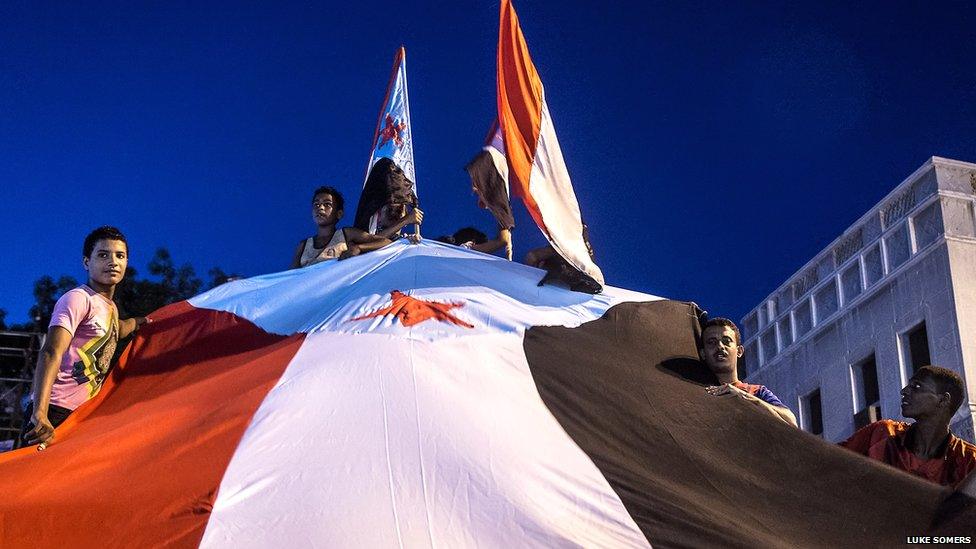
A large share of SM followers are too young to have lived in anything but a unified Yemen. Yet widespread unemployment and underemployment in a city once recognised as a cosmopolitan economic centre have compelled some youths to side with what many consider an extremist movement. As government officials press on with attempts to restructure the political system, the recent lessons of Yemen’s own part in the Arab Spring may continue to embolden change-seeking youths. Photos: Luke Somers